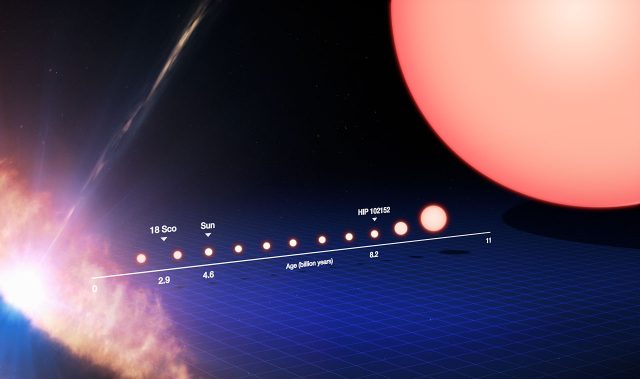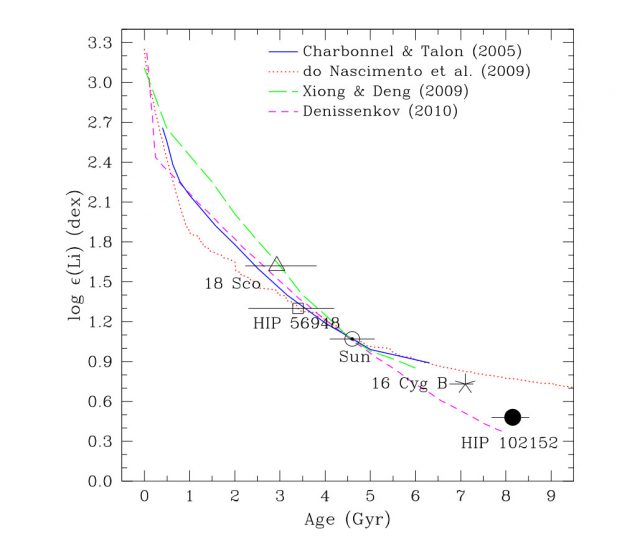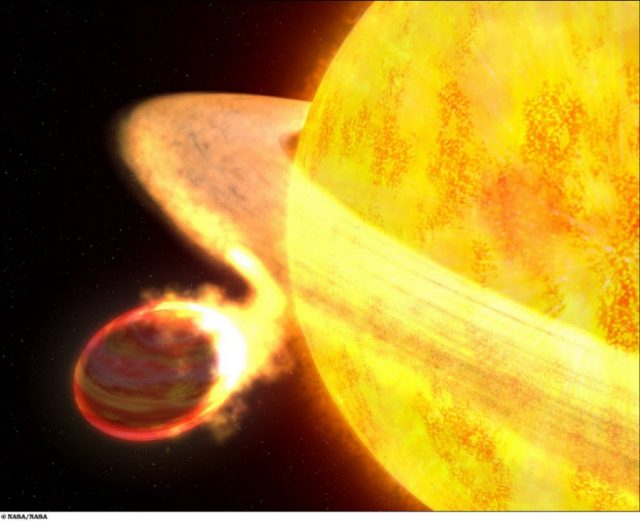Lithium, planets and solar twins
We needed a Big Bang to create lithium, now it seems that it is much easier to destroy. This light element is the center piece of one of the most intriguing astronomical controversies. Can we use the lithium to look for planet-hosting stars? Why is it depleted in older stars? Anyway, Lithium seems to be far less abundant than expected in some stars, while some others have simply too much of it. Since it does not require very high temperatures to be burned, it is even a good test to distinguish cool stars from brown dwarfs. But this is another history.

TalaWanda Monroe and collaborators 1 have been recently able to retrieve information from the most sun-like star we have ever seen, HIP 102152. Temperature, gravity, composition or even turbulence agree with a precision never attained by any other star. However, there is a significant parameter that makes the difference between HIP 102152 and the Sun: the age. While our Sun is supposed to be 4,600 million years old, this star is 8,200 million years old, so it is like our Sun in 3,600 million years. An easy way to peek into our favourite star’s future. HIP 102152 is still in the main sequence, and it has not entered into the red giant phase (Figure 1). But, anyway, it is close to it and it is a good approach to understanding stellar evolution. Another close solar analog (18 Sco) was observed for this work. Again, its resemblance to the Sun is astonishing in most aspects but, this time, the star is younger, being “only” 2,900 million years old. These stars (including our Sun) show a remarkably trend of Li abundance with age, as shown in Figure 2.

It has been proposed that enhanced lithium depletion is a marker for the presence of planets around stars 2. This is possibly the key point in the dispute about the planet-lithium correlation. While the works by Israelian and others accepted that there is a correlation between the abundance of this element and age (as seen in figure 2), they did not observe strong enough trends to support the idea that age alone could be responsible for the observed abundances. If true, this was indeed a great result since determination of Li abundance could be a much powerful tool for searching planet-hosting star candidates than any other we have now.
However, shortly after the work by Israelian and collaborators, Baumann and co-workers 3 studied a sample of more than one hundred solar analogues, including the smaller samples studied by previous works. Contrarily to what had been previously reported the found quite clear correlation between lithium content and age, and no correlation between the existence of known planets and this element abundance.
Beyond these observational correlations, one also has to think which mechanisms could relate the presence of planets and the abundance of Li. Let’s first look to the relics of the Solar System. Should Li abundance be higher than in the Sun, then a stellar process is going on. And it is. The abundance of lithium in meteorites is about 160 times higher than in the Sun’s photosphere. This means that Li is destroyed in our star, but why? Photospheric temperatures are not high enough to destroy Li, much higher temperatures are required (more than 2,5 million K). This implies that there should be some mechanism to transport it downwards. One in the stellar interior, Li is known to be easily destroyed by proton capture reactions.
What do we need to move Li to the star’s center? The kind of mixing we are looking for between the star’s convection zone and the radiative core will be more likely in stars that either have a larger convective region or show a greater differential rotation. A long-standing circumstellar disk during planetary formation would have a tremendous influence over the distribution of angular momentum in the star system. This would slow-down the stellar rotation and favor the rotationally driven Li mixing.
Reasonable as this mechanism may seem, the true is that the latest data do not seem to support this idea, and the Li abundances in solar-like stars seem to be a function of stellar age, regardless of the presence of planets. However, it must be noted that there is also good evidence that the presence of planets orbiting a star can produce the opposite effect, increasing dramatically the amount of Li and other refractory elements in the star’s photosphere if the planet is engulfed by the star. This is one of the few Li-creation processes we now in the present Universe.

It is more than likely that the last word on this lithium controversy is still to be said. Finding a fast and easy way to spot candidates for planet hosting stars is good motivation but, in my opinion, if during this pursuit we understand better the laws ruling our Sun and planetary system, then the search definitely worths the effort.
References
- Monroe T.R., Meléndez J., Ramírez I., Yong D., Bergemann M., Asplund M., Bedell M., Tucci Maia M., Bean J. & Lind K. & (2013). HIGH PRECISION ABUNDANCES OF THE OLD SOLAR TWIN HIP 102152: INSIGHTS ON Li DEPLETION FROM THE OLDEST SUN, The Astrophysical Journal, 774 (2) L32. DOI: 10.1088/2041-8205/774/2/L32 ↩
- Israelian G., Mena E.D., Santos N.C., Sousa S.G., Mayor M., Udry S., Cerdeña C.D., Rebolo R. & Randich S. (2009). Enhanced lithium depletion in Sun-like stars with orbiting planets, Nature, 462 (7270) 189-191. DOI: 10.1038/nature08483 ↩
- Baumann P., Ramírez I., Meléndez J., Asplund M. & Lind K. (2010). Lithium depletion in solar-like stars: no planet connection, Astronomy and Astrophysics, 519 A87. DOI: 10.1051/0004-6361/201015137 ↩